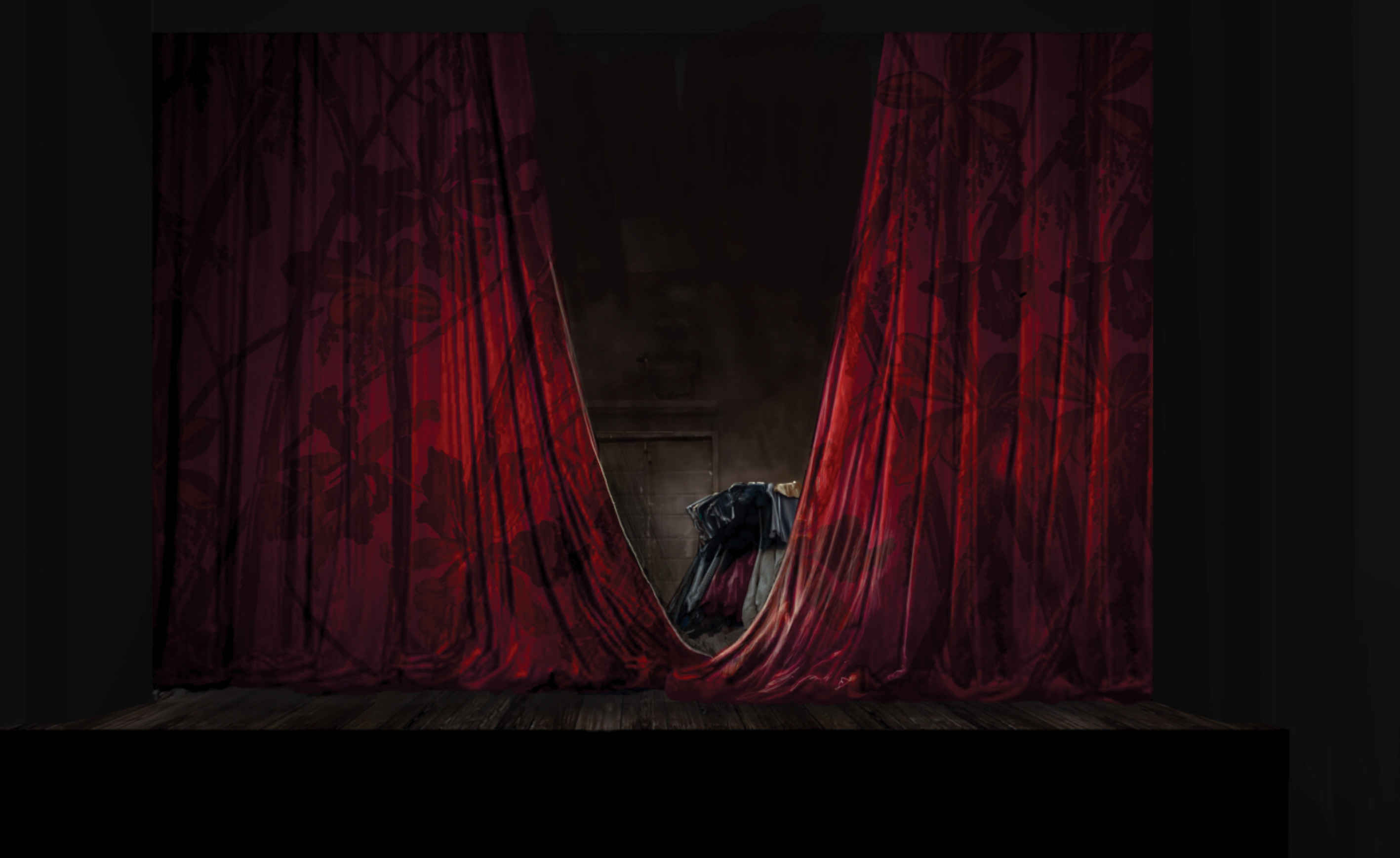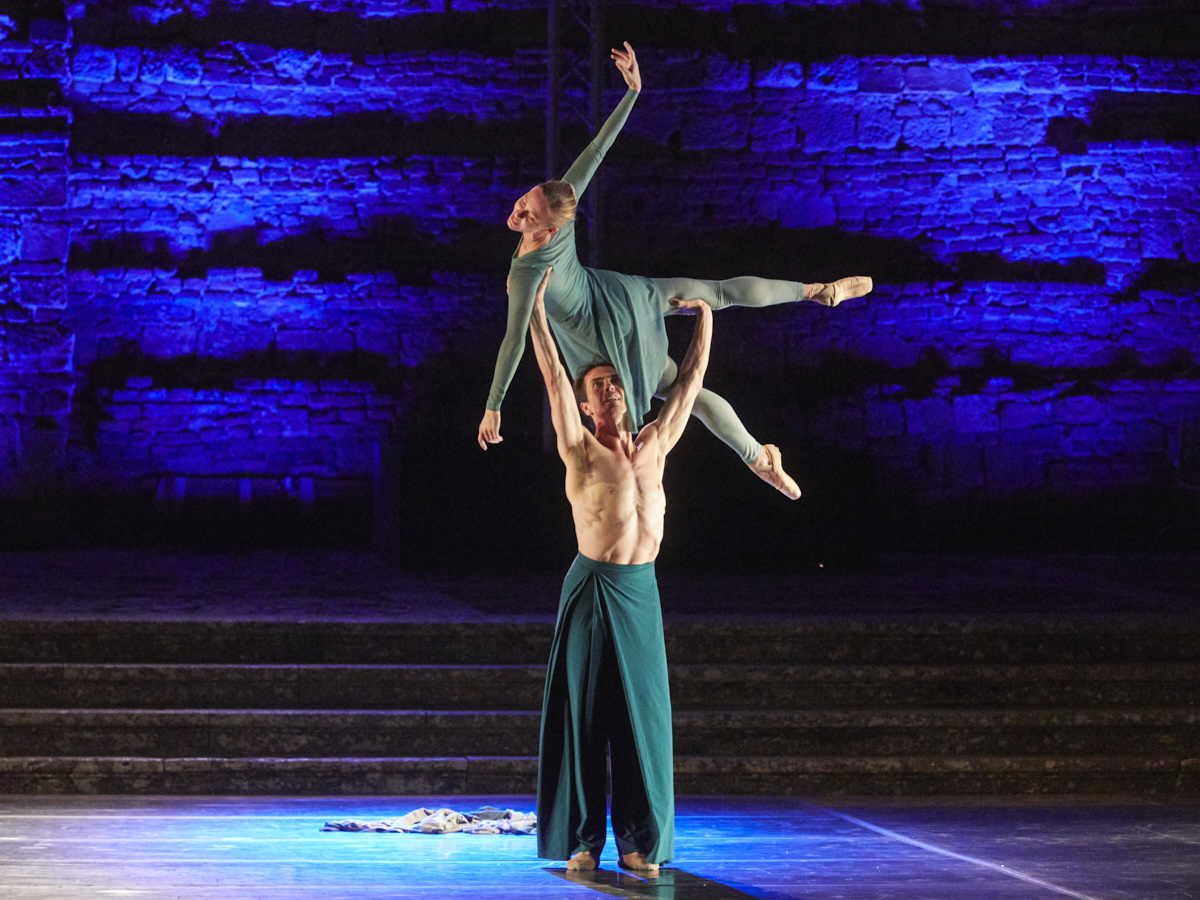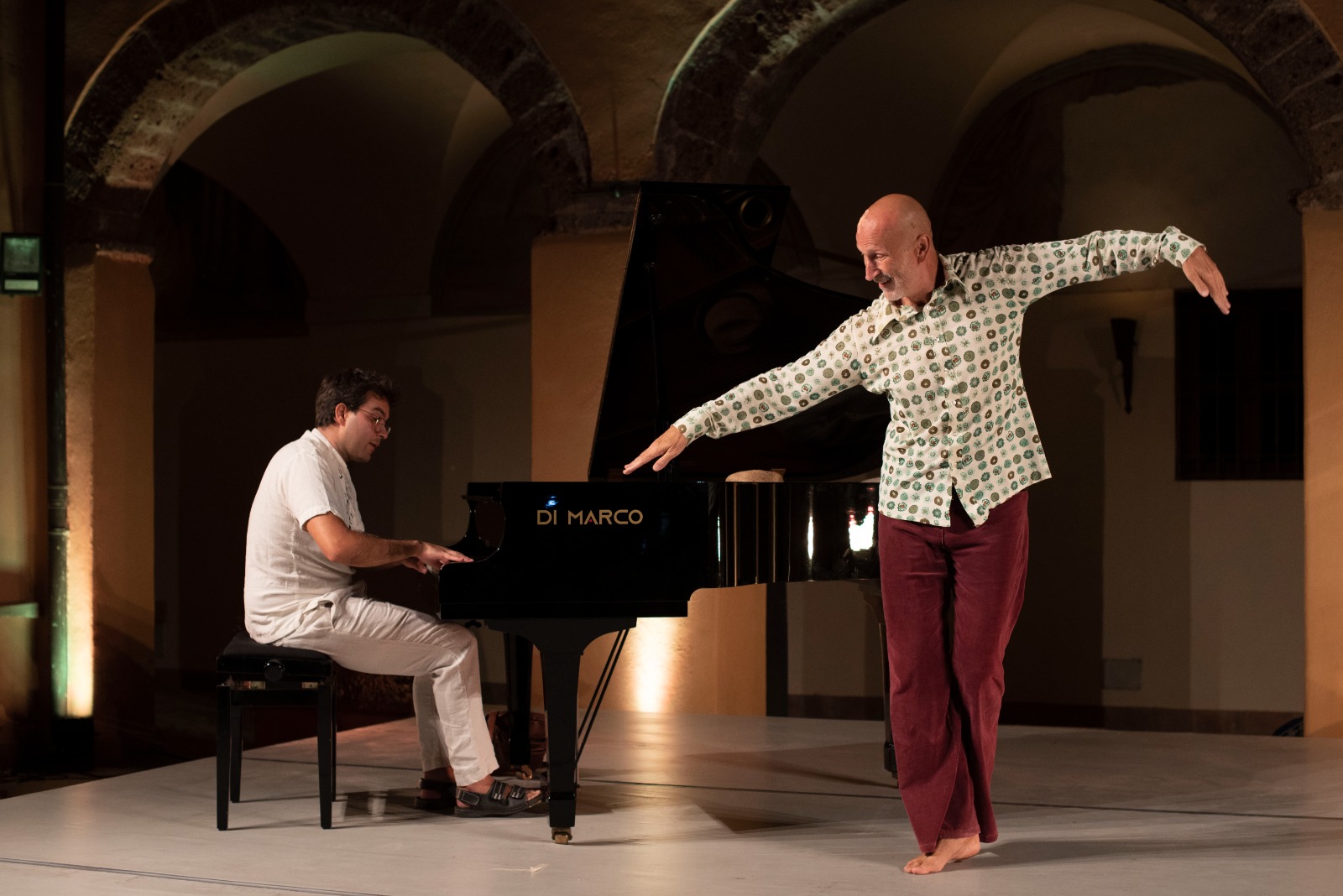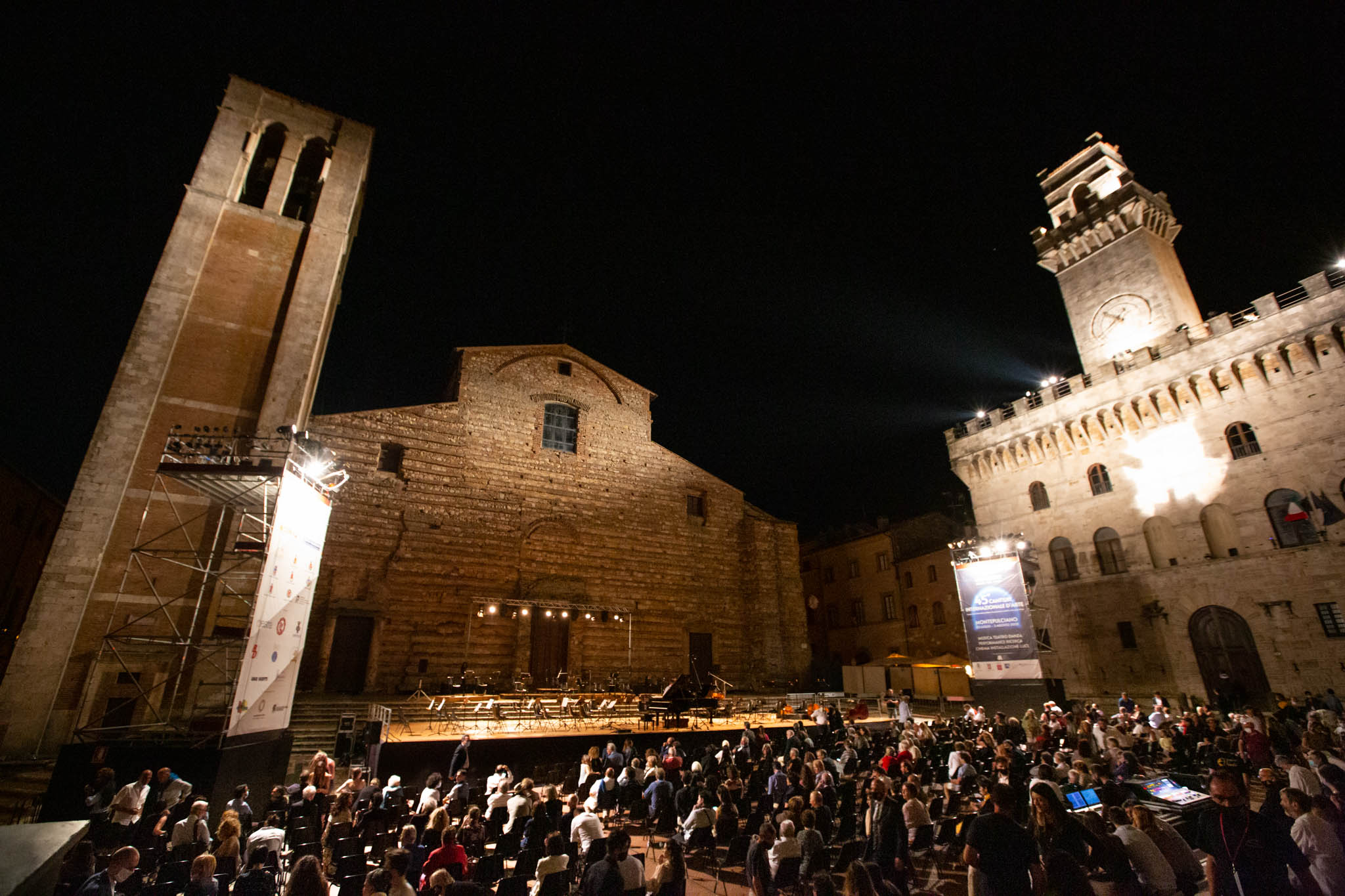CONTEMPORANEAMENTE ANTICO
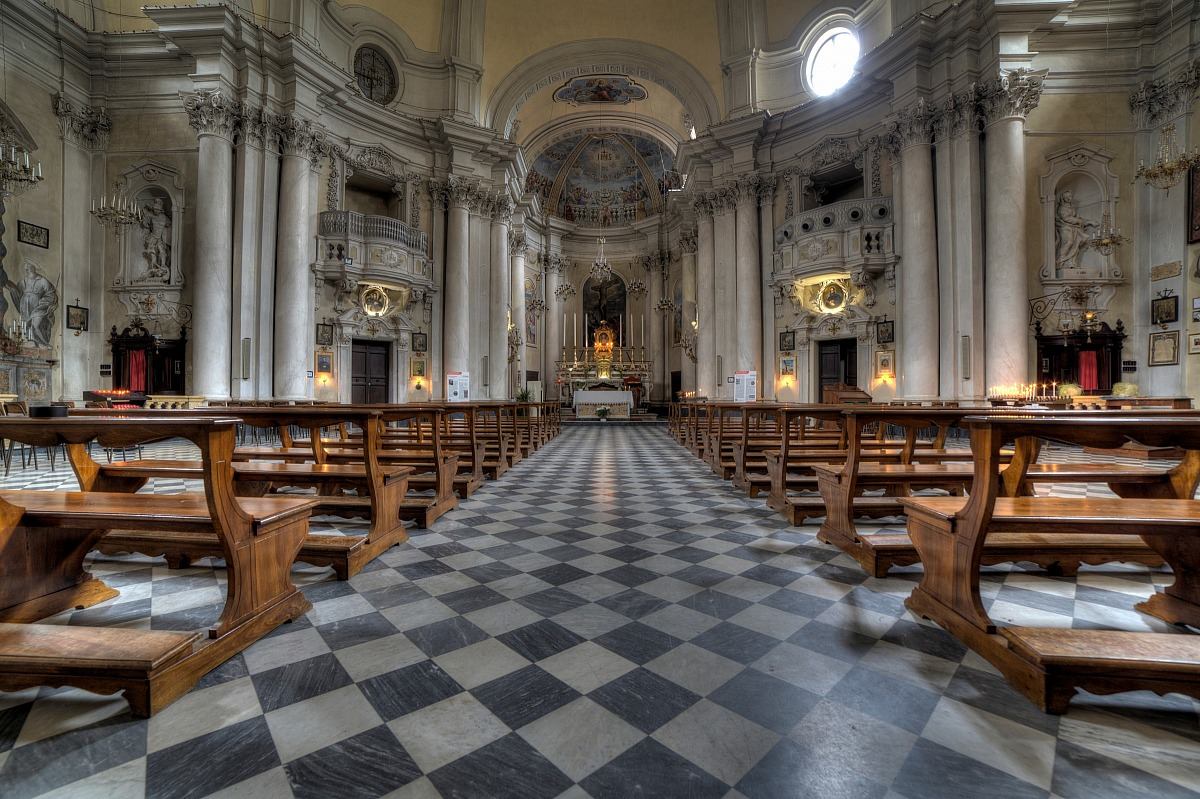
MONTEPULCIANO - Chiesa del Santissimo Nome di Gesù
Mercoledì 26 luglio, ore 21.30
CONTEMPORANEAMENTE ANTICO
Orchestra e solisti del Conservatorio “Rinaldo Franci” di Siena
Rebecca Ciogli violoncello
Elisabetta Ricci mezzosoprano
Myungjae Kho soprano
Massimo Niccolai direttore
PROGRAMMA
Johann Sebastian Bach (1685-1750)
Suite n.5 in do minore BWV 1011 per violoncello solo
Prélude
Allemande
Courante
Sarabande
Gavotte I
Gavotte II
Gigue
Canoni e Ricercare a 6
dall'Offerta musicale in re minore BWV1079
Antonio Anichini (1962)
Trittico per due soprani e orchestra
(prima assoluta, commissione del 48° Cantiere)
I - Stella obscura
Andante-Allegro molto ritmico e con fuoco
II - Mysterium
Lay de la solitude Adagio-Andante-Adagio
Epiphania mysterii Allegro-Un poco meno allegro-Allegro
Lay de l’Esperance Andante con moto-Moderato
III- Stella splendens
Allegro vivace-Andante-Allegro vivace-Prestissimo
______________________________
Trittico è un viaggio, un percorso alla ricerca della propria identità, delle proprie radici trascendenti attraverso l’immanente (anche musicale); una ricerca di ciò che è oltre la forma e il tempo pur manifestandosi attraverso la forma e il tempo (anche musicale); un cammino in cui risuonano antichissimi archetipi sonori, improvvisi spazi, forse inattesi perché dimenticati o non più sperati; una dimensione in cui i generi musicali, le varie epoche storiche, i materiali musicali sono relativizzati nella intensità di essere appello per ciò che è oltre ogni categoria logica, oltre ogni schema o concetto mentale, oltre ogni illusione di originalità. Paradossalmente nell’evocare gli echi del passato, in questo contesto, si fa spazio un presente rinnovato, come vivificato dall’appello dell’oracolo… “conosci te stesso”. Stella obscura, Mysterium e Stella splendens sono le tre tappe di questo viaggio.
Stella obscura, un richiamo del corno giunge dalle più remote regioni spazio temporali: è un segnale che preannuncia l’arrivo di un evento, l’incontro con l'abisso e la sua forza che distrugge ciò che è rigido e meccanico, vecchi schemi, condizionamenti e maschere sfinite dal loro stesso gioco perverso. Sotto questo aspetto il primo movimento è una sorta di “totentanz", non tanto come danza macabra di romantica memoria, ma come danza dell’energia che nella sua azione dirompente mette a nudo l’identità di quelle forme ormai esauste. E nel distruggerle apre nuovi spazi da cui intravedere l’infinito.
Il secondo movimento, Mysterium è a sua volta articolato in tre sezioni: Lay de la solitude, celebrazione della solitudine del deserto interiore, faccia a faccia con il proprio Essere, nella profondissima quiete dinamica e feconda dello spazio che improvvisamente rivela il mistero (Epiphania mysterii) in cui è intuita la grandiosa manifestazione cosmica ed eterna dell’Origine, della Fonte della Creazione (la Madre universale). Lay de l'Esperance è la ripresa trasfigurata del Lay de la Solitude ma in una nuova dimensione dove la solitudine è percorsa da fremiti di quello stato dell’Essere che è “oltre ogni umana comprensione”, conquistata pienezza, intima e grandiosa.
Stella splendens, ultima tappa del viaggio, è la celebrazione terrena e immanente di quella gioia a cui si è approdati al termine della seconda parte. Celebrazione attraverso la danza, espressione del movimento armonico che accomuna il genere umano, danza che era presagita già con le ultime battute di Mysterium.
Il testo (liberamente tratto e rielaborato dalla tradizione sapienziale millenaria) rivela da un lato la struttura tripartita del movimento e dall’altro il superamento della contrapposizione dualistica positivo/negativo: adesso, è possibile danzare e danzare non solo nella tempesta ma “con la tempesta”.
Questo movimento finale, nel superamento degli opposti, integra, per mezzo di un elaborato e complesso contrappunto polifonico, danze di tre generi diversi: ragtime, valzer e danze/canti sacri del XIII secolo (sia la danza medievale sulle Cantigas de Santa Maria che la danza Sufi dei monaci dervisci di Jalal Al Din Rumi).
Infatti fra i vari temi (tra i quali ad esempio anche il richiamo del corno iniziale) si può individuare la famosa Cantiga di re Alfonso X “il saggio” (1250 cca) “Santa Maria, strela do dia” intonata innumerevoli volte nei secoli dai pellegrini sul percorso di Santiago di Compostela. Questa citazione non è presentata subito per intero ma a poco a poco attraverso le sue quattro ripetizioni che hanno luogo durante tutto il movimento. Infatti Stella splendens è una "danza di danze” di forma ternaria tendenzialmente simmetrica (ABA-C-A’BA’) dove però la simmetria è infranta da un vorticoso accelerando finale che, all’ultima ripetizione dove la Cantiga si rivela per intero, la forma si dissolve. E in questo cortocircuito spazio temporale, sembra di essere di nuovo in limine, quasi un’estasi sciamanica. Antonio Anichini
Triptych is a journey, a search of one's own identity, of one's own transcendent roots through the immanent (also musical); a search for what is beyond form and time while manifesting itself through form and time (also musical); a path in which ancient sound archetypes echo; sudden, perhaps unexpected spaces, either forgotten or no longer hoped for; a dimension in which musical genres, different periods in history, musical materials are made relative in the intensity of being appealing in themselves outwith any logical category, beyond any mental scheme or concept, beyond any illusion of originality. Paradoxically, in evoking the echoes of the past, in this context, a renewed present makes room for itself, as if enlivened by the oracle's appeal "know thyself".
The three stages of this journey are Stella obscura, Mysterium and Stella splendens.
Stella obscura a horn call comes from the outermost reaches of space-time: it is a signal heralding the arrival of an event ... an encounter with the abyss whose force destroys what is inflexible and mechanical, outmoded concepts, constraints and affectations worn out by their own perverse game. In this respect, the first movement is a kind of 'totentanz', not so much a Danse Macabre of romantic memory, as a dance of energy that in its disruptive action lays bare the identity of those worn-out forms. And in destroying them it creates new spaces from which to glimpse the infinite.
The second movement, Mysterium, is in turn divided into three sections:
Lay de la solitude, a celebration of the solitude of the inner void, confronting one’s essential Self, in the deepest dynamic and fertile stillness of the space that suddenly reveals the mystery (Epiphania mysterii) in which we behold the grandiose cosmic and eternal manifestation of the Origin, of the Source of Creation (the universal Mother).
Lay de l'Esperance is the transformed restatement of Lay de la Solitude, but in a new dimension where solitude is shot through with trembling of that state of Being which is 'beyond all human comprehension', consummate innermost and overwhelming wholeness.
Stella splendens, the last stage of the journey, is the earthly and immanent celebration of the joy attained at the end of the second part. Celebration through dance, the expression of the harmonic movement that unites the human race, a dance that was already heralded in the final bars of Mysterium. The text (freely drawn and reworked from the wisdom of the ages) reveals on the one hand the tripartite structure of the movement and on the other hand the transcending of the positive/negative binary: now, it is possible to dance and dance not only in the storm but 'with the storm'.
This final movement, in prevailing over opposites, integrates, by means of an elaborate and complex polyphonic counterpoint, dances of three different genres: ragtime, waltz and 13th century sacred dances/songs (both the medieval Cantigas de Santa Maria and the Sufi dance of the dervish monks of Jalal Al Din Rumi). Indeed, among the various themes (including, for example, the initial horn call) one can identify the famous Cantiga of King Alfonso X 'the Wise' (c. 1250) 'Santa Maria, strela do dia' intoned countless times over the centuries by pilgrims on the route to Santiago de Compostela. This passage is not introduced immediately in full but gradually through its four repetitions that take place throughout the movement. In fact, Stella splendens is a "dance of dances" with a ternary form that tends to be symmetrical (ABA-C-A'BA') where, however, the symmetry is broken by a final whirling accelerando that, at the last repetition where the Cantiga is revealed in full, the form dissipates. And in this space-time short-circuit, we seem to be back at the inception, almost a shamanic ecstasy. Antonio Anichini
 Amministrazione Trasparente
Amministrazione Trasparente



